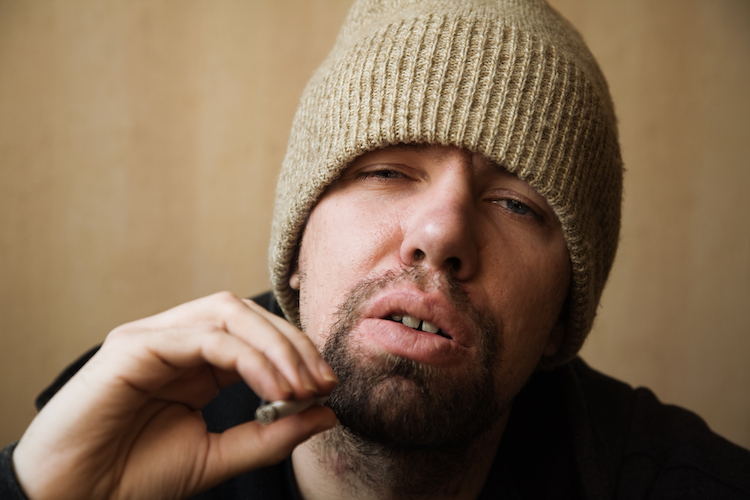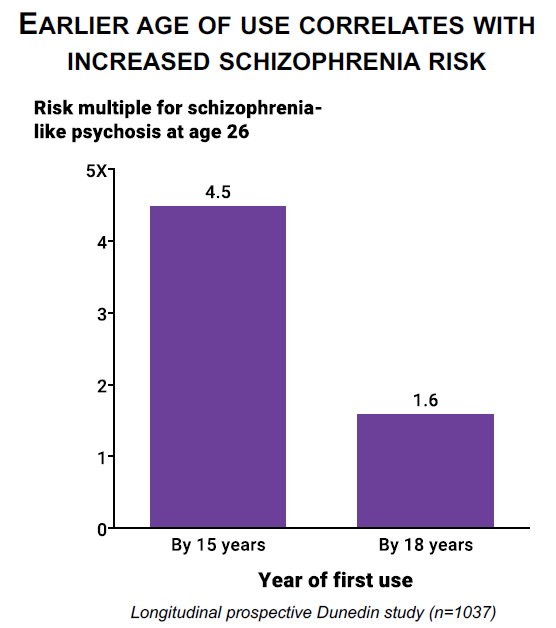 New Zealand has some of the richest data on the adverse consequences of cannabis use coming from two major studies: the Christchurch Health and Development Study (CHDS) and the Dunedin Multidisciplinary Health and Development Study (DMHDS).
New Zealand has some of the richest data on the adverse consequences of cannabis use coming from two major studies: the Christchurch Health and Development Study (CHDS) and the Dunedin Multidisciplinary Health and Development Study (DMHDS).
The CHDS is a study of a cohort of 1265 children born in 1977 who have been studied to the age of 35. The study has now published 30 scientific papers on the issue of cannabis. This research shows that:
- Cannabis use by cohort members was common, with over 75 per cent reporting use, and in the region of 15 per cent developing a pattern of heavy use and dependence at some point.
- The use of cannabis was associated with increased risks of a number of adverse outcomes including: educational delay; welfare dependence; increased risks of psychotic symptoms; major depression; increased risks of motor vehicle accidents; increased risks of tobacco use; increased risks of other illicit drug use; and respiratory impairment. These effects were most evident for young (under 18-year-old) users and could not be explained by social demographic and contextual factors associated with cannabis use.
- Regular or heavy cannabis use was associated with an increased risk of using other illicit drugs, abusing or becoming dependent upon other illicit drugs, and using a wider variety of other illicit drugs.
In the case of the Dunedin-based study, the scientists, controlling for factors like years of education, schizophrenia, and the use of alcohol or other drugs, followed 1,037 individuals born in Dunedin from birth (1972/1973) to age 38 y. Cannabis use was ascertained in interviews at ages 18, 21, 26, 32, and 38 y. Neuropsychological testing was conducted at age 13 y, before initiation of cannabis use, and again at age 38 y, after a pattern of persistent cannabis use had developed. The study found that using marijuana regularly before age 18 resulted in an average IQ of 6-8 fewer points at age 38 relative to those who did not use marijuana before age 18. This was still true for teens who used marijuana regularly but stopped using the drug after the age of 18.
“Cannabis use in adolescence, when the brain is undergoing critical development, may have neurotoxic effects.” – lead author.

The 25-year longitudinal study of a birth cohort of 1,265 NZ children by Christchurch School of Medicine found that adolescents who smoke marijuana every weekend over a 2-year period are nearly 6-times more likely to drop out of school than nonsmokers, more than 3-times less likely to enter university than nonsmokers, and more than 4-times less likely to earn a college degree. We don’t know whether marijuana causes teens to drop out or whether it’s the environment within which they smoke dope, but given marijuana’s effect on learning and motivation (as shown above), it is safe to say that marijuana use very likely has something to do with it. It’s called ‘dope’ for a reason.
Researchers led by the National Drug and Alcohol Research Centre at the University of New South Wales (and including New Zealand researchers) analysed results of three large, long-running studies from Australia and New Zealand involving nearly 3,800 people. Teenagers who start smoking cannabis daily before the age of 17 are seven times more likely to commit suicide.
In 2007, NZ scientists studied 339 marijuana and cigarette smokers, and determined that smoking ONE joint of marijuana was comparable to the effects on airflow obstruction of between 2.5 – 5 tobacco cigarettes, “Adverse effects [of marijuana] on lung function is of major public health significance,” the study authors warned.
They also examined 79 cases of lung cancer and 324 control patients and concluded: “long-term cannabis use increases the risk of lung cancer in young adults.”

